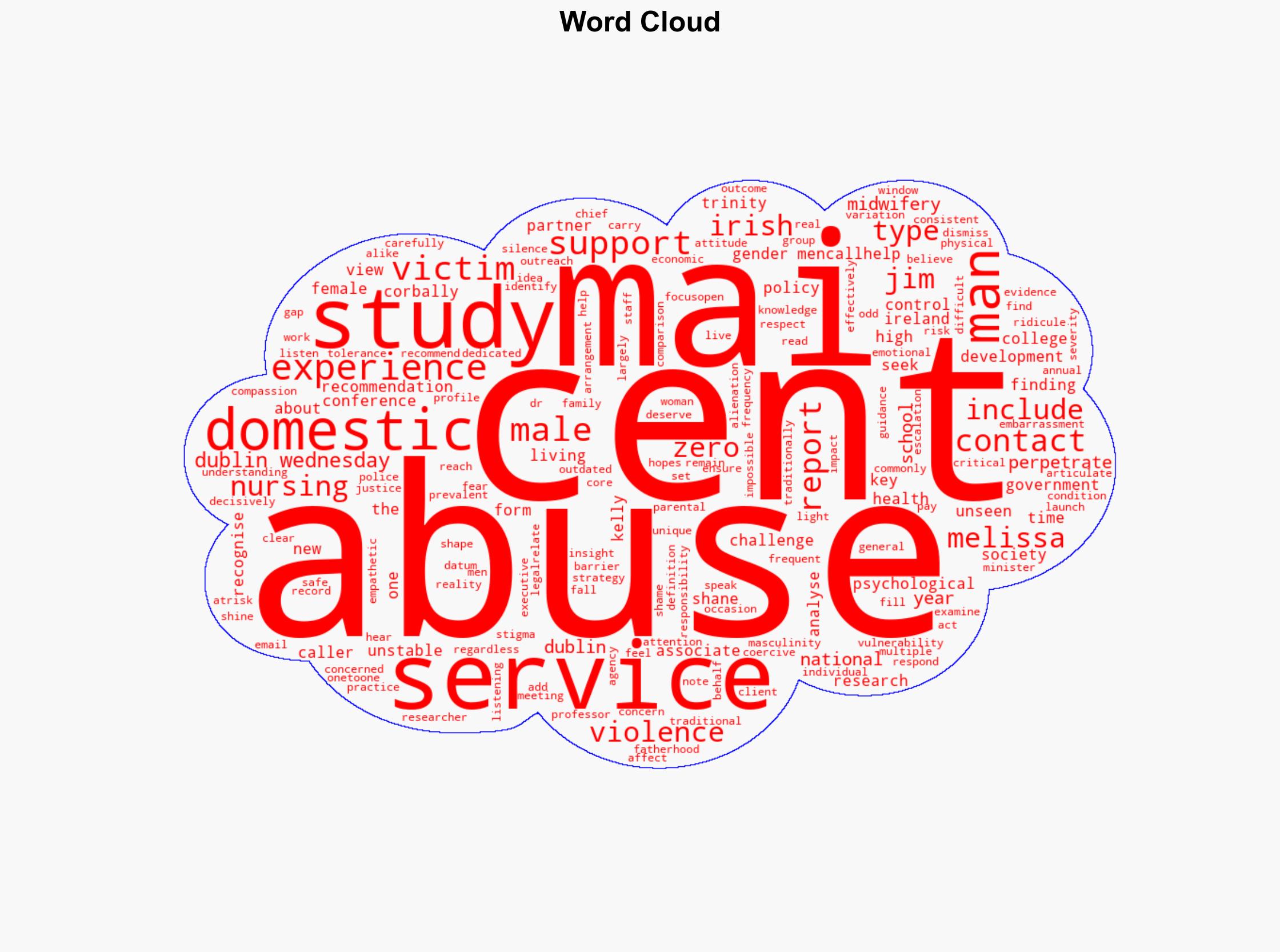Male domestic abuse victims largely unseen due to embarrassment shame and fear – study – The Irish Times
Published on: 2025-11-19
AI-powered OSINT brief from verified open sources. Automated NLP signal extraction with human verification. See our Methodology and Why WorldWideWatchers.
Intelligence Report:
1. BLUF (Bottom Line Up Front)
The strategic judgment is that male victims of domestic abuse remain largely unseen due to societal stigma and inadequate support systems. The most supported hypothesis is that traditional gender norms and lack of tailored services contribute significantly to the underreporting and invisibility of male domestic abuse victims. Confidence Level: Moderate. Recommended action includes developing gender-inclusive policies and increasing public awareness to reduce stigma.
2. Competing Hypotheses
Hypothesis 1: Male domestic abuse victims remain unseen primarily due to societal stigma and traditional gender norms that discourage men from reporting abuse.
Hypothesis 2: The invisibility of male domestic abuse victims is largely due to systemic inadequacies in support services and lack of targeted outreach to male victims.
Hypothesis 1 is more likely as it aligns with the cultural context of masculinity and the reported feelings of embarrassment and shame among male victims. However, Hypothesis 2 cannot be dismissed as the lack of dedicated services for men is a significant barrier to seeking help.
3. Key Assumptions and Red Flags
Assumptions include the belief that societal norms are the primary barrier to reporting, and that existing services are not adequately addressing male victim needs. Red flags include potential bias in self-reported data and the possibility of underestimating the role of systemic service inadequacies. No direct deception indicators are present, but the reliance on qualitative data may obscure the full scope of the issue.
4. Implications and Strategic Risks
The continued invisibility of male domestic abuse victims could lead to increased mental health issues and societal costs. Politically, failure to address this issue may result in criticism of government policies on domestic violence. Economically, untreated abuse could lead to increased healthcare and social service expenditures. Informationally, perpetuating stigma may hinder public awareness campaigns.
5. Recommendations and Outlook
- Develop and implement gender-inclusive domestic abuse policies.
- Increase public awareness campaigns to challenge traditional gender norms.
- Enhance support services specifically tailored for male victims.
- Best Scenario: Increased awareness and improved services lead to higher reporting rates and better support for male victims.
- Worst Scenario: Continued stigma and inadequate services result in further marginalization of male victims.
- Most-likely Scenario: Gradual improvement in awareness and services, but significant stigma remains.
6. Key Individuals and Entities
Shane Kelly, Chief Executive of Men’s Aid Ireland; Dr. Melissa Corbally, Associate Professor, Trinity College Dublin; Jim O’Callaghan, Minister for Justice.
7. Thematic Tags
Cybersecurity, Gender Equality, Domestic Abuse, Public Policy, Mental Health
Structured Analytic Techniques Applied
- Adversarial Threat Simulation: Model and simulate actions of cyber adversaries to anticipate vulnerabilities and improve resilience.
- Indicators Development: Detect and monitor behavioral or technical anomalies across systems for early threat detection.
- Bayesian Scenario Modeling: Quantify uncertainty and predict cyberattack pathways using probabilistic inference.
Explore more:
Cybersecurity Briefs ·
Daily Summary ·
Support us





